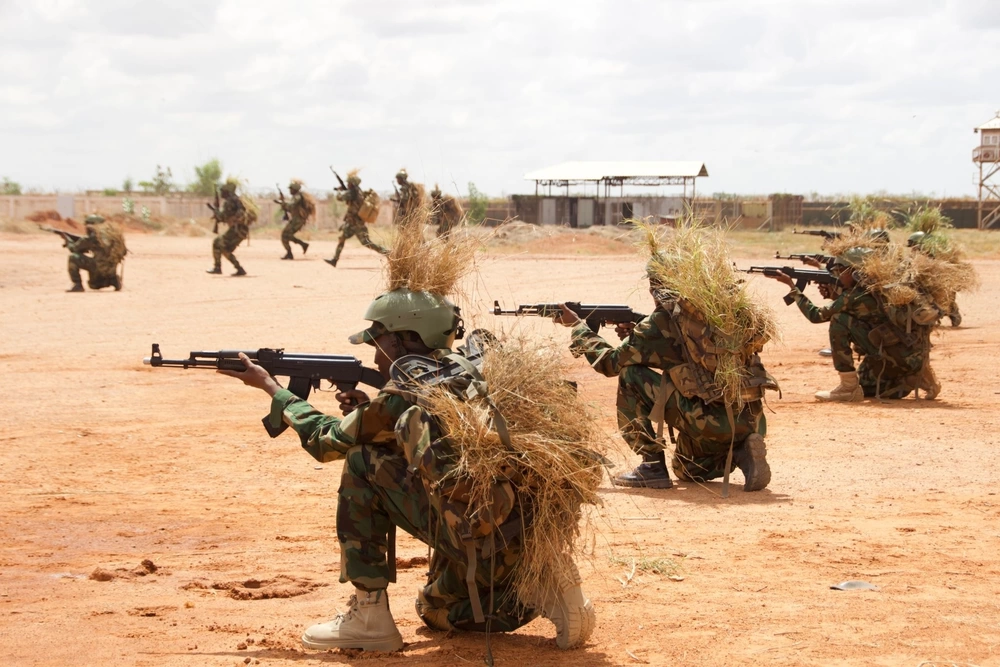US Africa Command said in a press release on Thursday that its forces launched multiple airstrikes in southern Somalia between June 27 and June 30, a time when Somali media reported major battles between a US-backed force and al-Shabaab.
It’s unclear how many strikes AFRICOM launched during the battle, but it means the US has now launched more than 45 in the country this year and is well on its way to breaking the annual record, which President Trump set at 63 during his first term in 2019. Besides its air war against al-Shabaab in southern and central Somalia, the US has also been launching airstrikes against an ISIS affiliate in the northeastern Puntland region.
AFRICOM didn’t offer any details about the latest strikes other than saying they were launched against al-Shabaab west of the city of Kismayo, in the vicinity of the village of Buulo Xaaji, which is located in Somalia’s Jubaland region. “Specific details about units and assets will not be released to ensure continued operations security,” the command said.
Since April, AFRICOM has stopped sharing estimates of casualties and assessments of civilian harm. According to Somali media, the Danab, a US-trained special operations force, launched an offensive against al-Shabaab near the village of Buulo Xaaji, and the Somali Defense Ministry said in a statement on June 30 that its forces killed more than 50 al-Shabaab fighters in the area over the previous five days.

The Defense Ministry said the operation was carried out with the support of “international partners” and that “successive airstrikes” were launched during the battle. It acknowledged the death of two of its soldiers, while al-Shabaab claimed it killed six US-trained troops.
The Defense Ministry claimed that its forces took control of the area while al-Shabaab claimed to have repelled the attack. The ministry also said that the Danab fought alongside the Jubaland Darawish, a local security force.
Last year, the US-backed Federal Government rejected the election results in Jubaland, causing the state of Jubaland to suspend ties with the government. Sporadic clashes between government troops and local Jubaland land forces have broken out since then, but they appear to be continuing to cooperate against al-Shabaab.
The US-backed government, led by President Hassan Sheikh Mohamud, controls a small amount of territory within Somalia’s internationally recognized borders and is considered to be very weak. Counterterrorism experts have called for the government to negotiate with al-Shabaab, saying a military victory against the militant group isn’t possible.
Al-Shabaab has been waging a relatively successful offensive against government forces, enough so that the US has discussed the possibility of Mogadishu falling to the militant group. The New York Times reported on April 10 that State Department officials suggested closing down the US embassy in Mogadishu and evacuating most US personnel due to the threat. But other officials, including Sebastian Gorka, the top counterterrorism official on the National Security Council, called for the US to escalate in Somalia and double down on its policy of propping up the government, and they appear to have won the internal debate.
Hawks who favor continued intervention in Somalia portray al-Shabaab as a major threat to the US due to its size and al-Qaeda affiliation, but it’s widely believed the group does not have ambitions outside of Somalia.
Al-Shabaab was born out of a US-backed Ethiopian invasion in 2006 that toppled the Islamic Courts Union, a coalition of Muslim groups that briefly held power in Mogadishu after ousting CIA-backed warlords. Al-Shabaab was the radical offshoot of the Islamic Courts Union. The group’s first recorded attack was in 2007, and it wasn’t until 2012 that al-Shabaab pledged loyalty to al-Qaeda.


